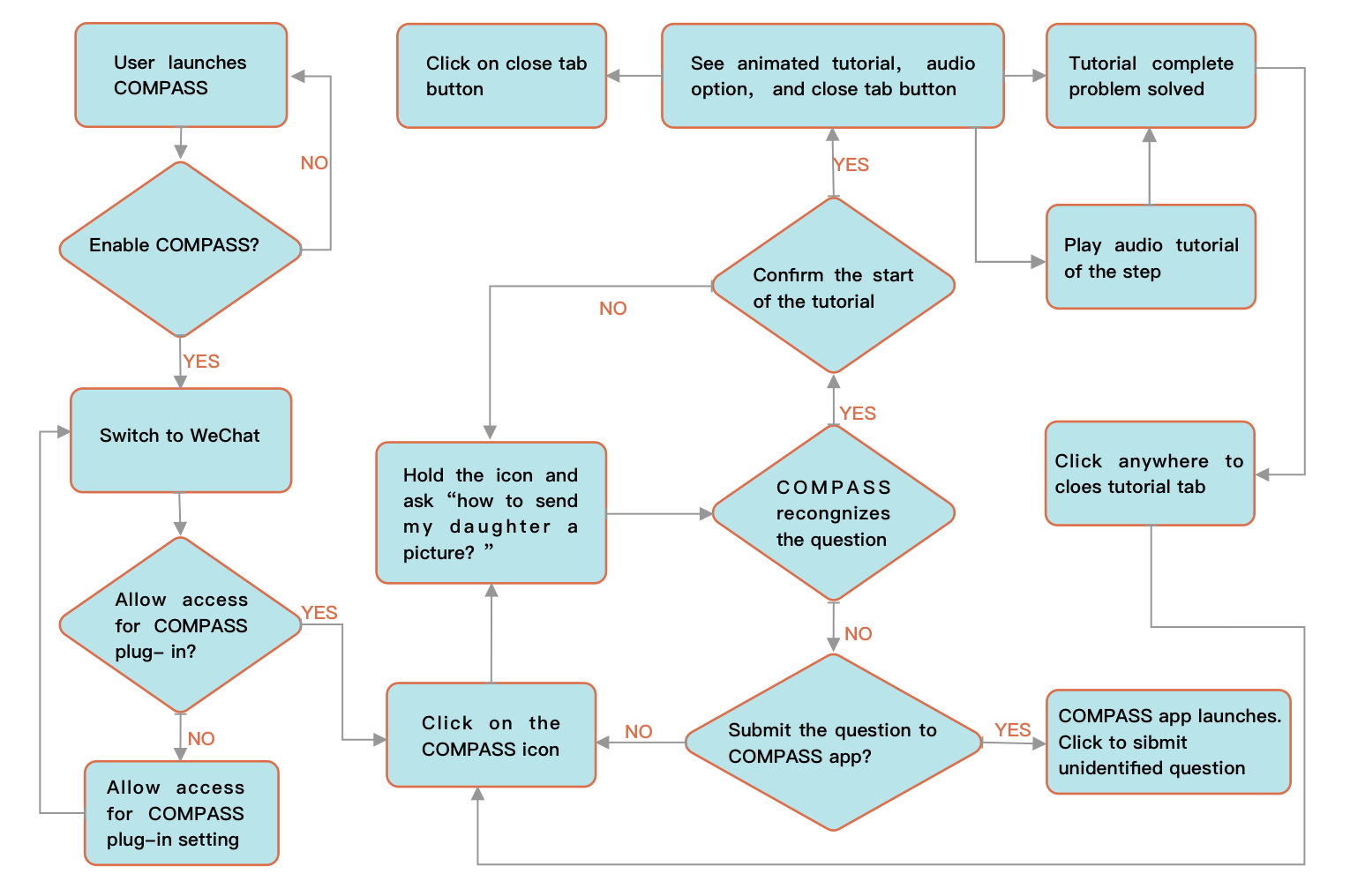CLICK or SCROLL on the pictures below to check out the full project!
Background Research & Interviews
Due to its large population base, China is now the country with the largest elderly population in the world. Beginning in 2020, China’s population aging rate has entered an accelerated phase, far exceeding the world average. The next 20 years may be the fastest growing time for China’s aging population.
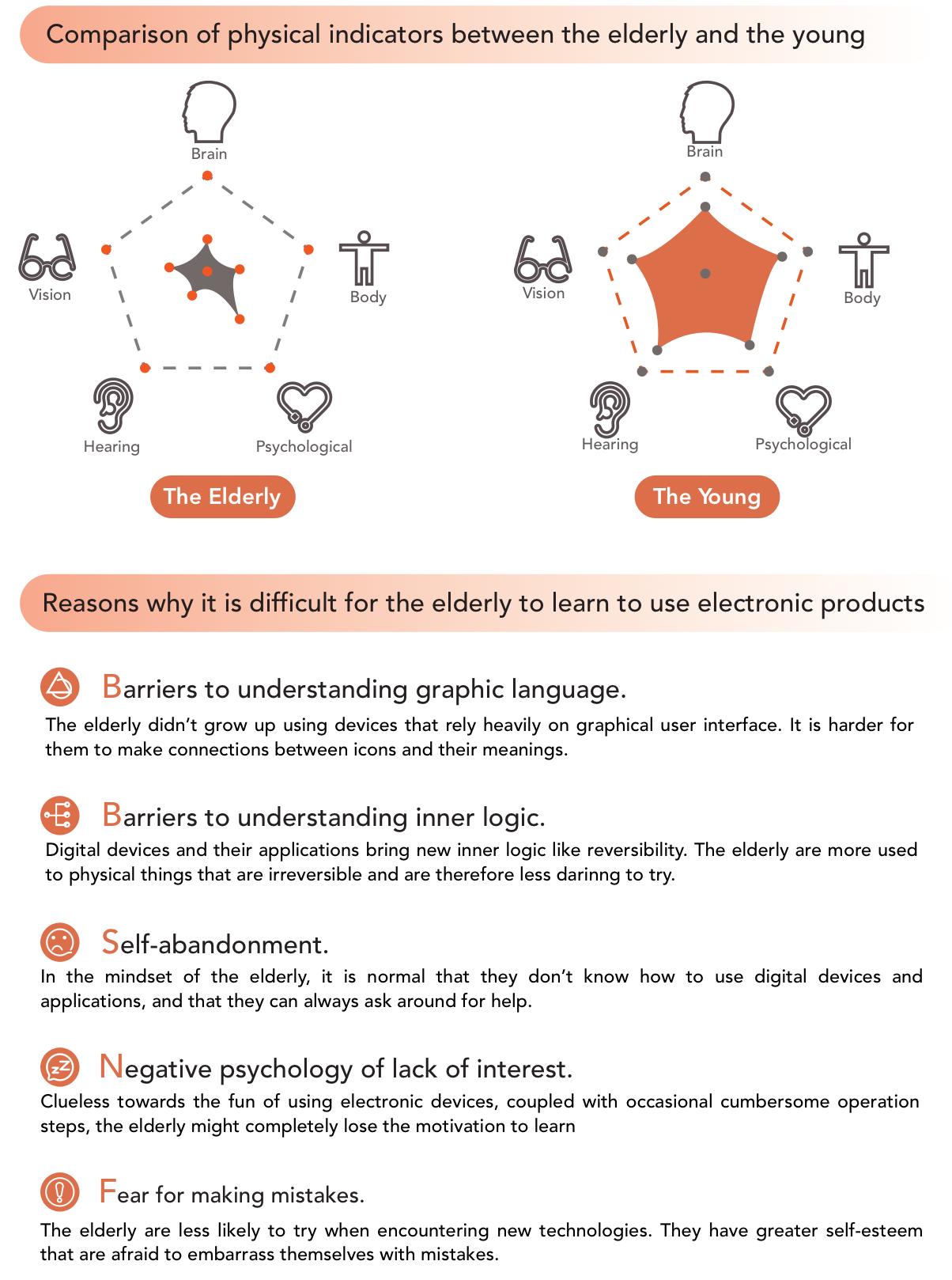
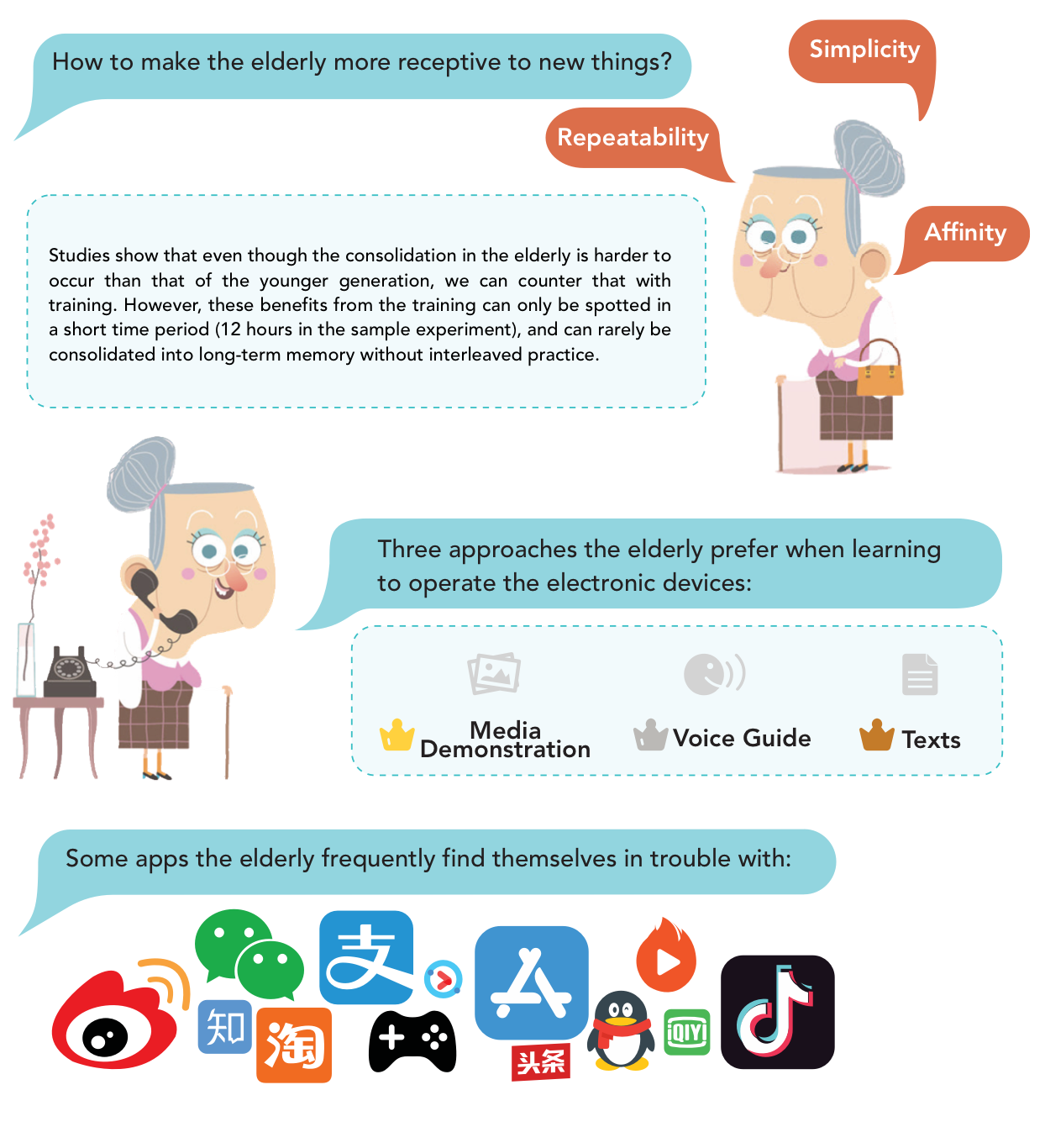
Q: How often do you use phone apps? What are some apps that you use most frequently?
A: Everyday, around 4-5 hours. I don’t use too many different kinds of apps. Mostly just Wechat, Tiktok and Headline.
Q: Do you run into problems when using these apps? What are some examples of the problems you have encountered before?
A: Sometimes. In Wechat, I was confused with the “recall” function. I still am not sure how to pay with Alipay.
Q: How many of those problems are solved? Through what methods did you manage to solve them?
A: I asked my daughter how to recall my messages once but I don’t remember how to do it now.
Personas
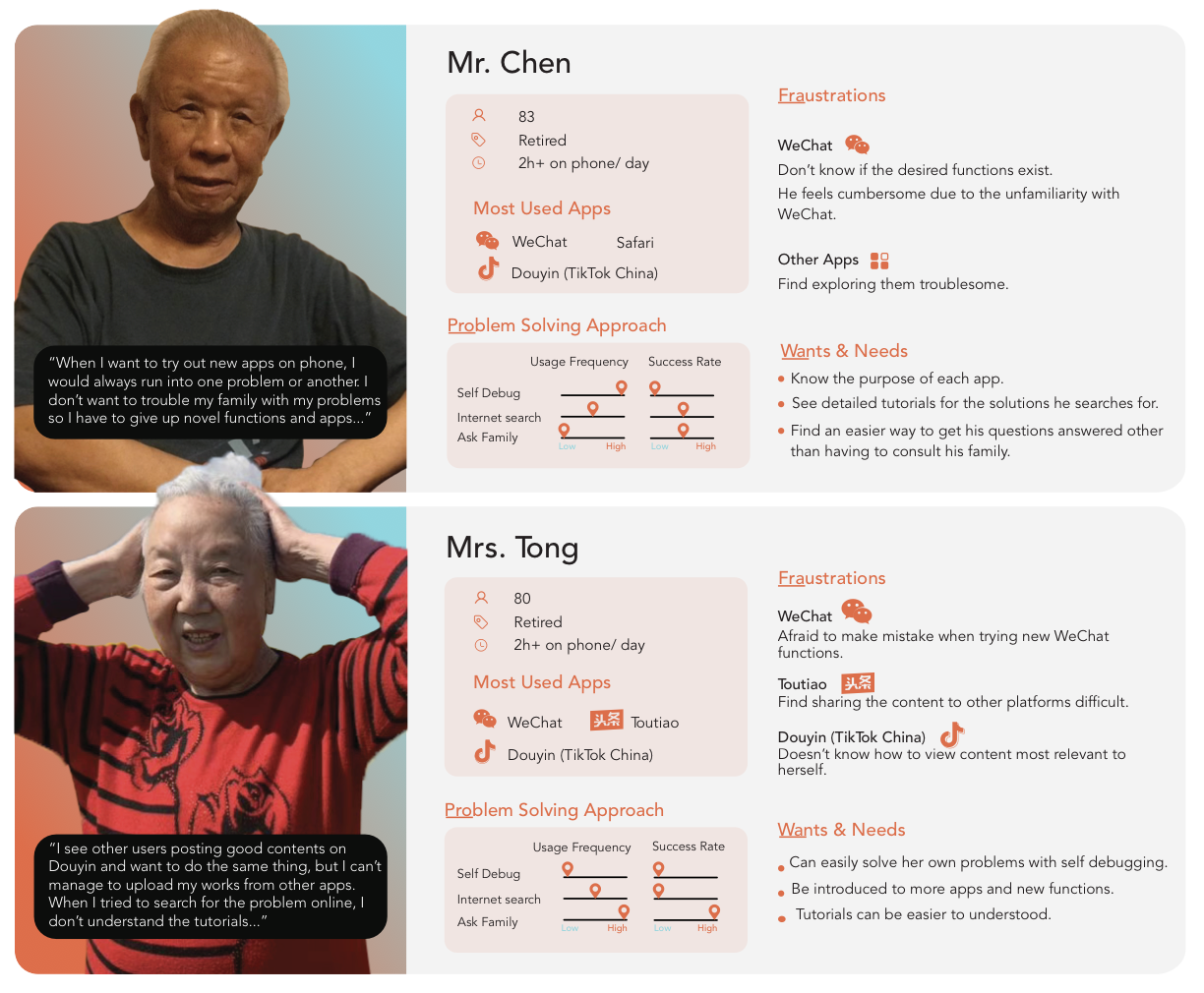
Baidu Experience
Baidu Experience is a life knowledge product launched by Baidu in October 2010. It mainly solves the user's "how to do it" and focuses on solving practical problems.
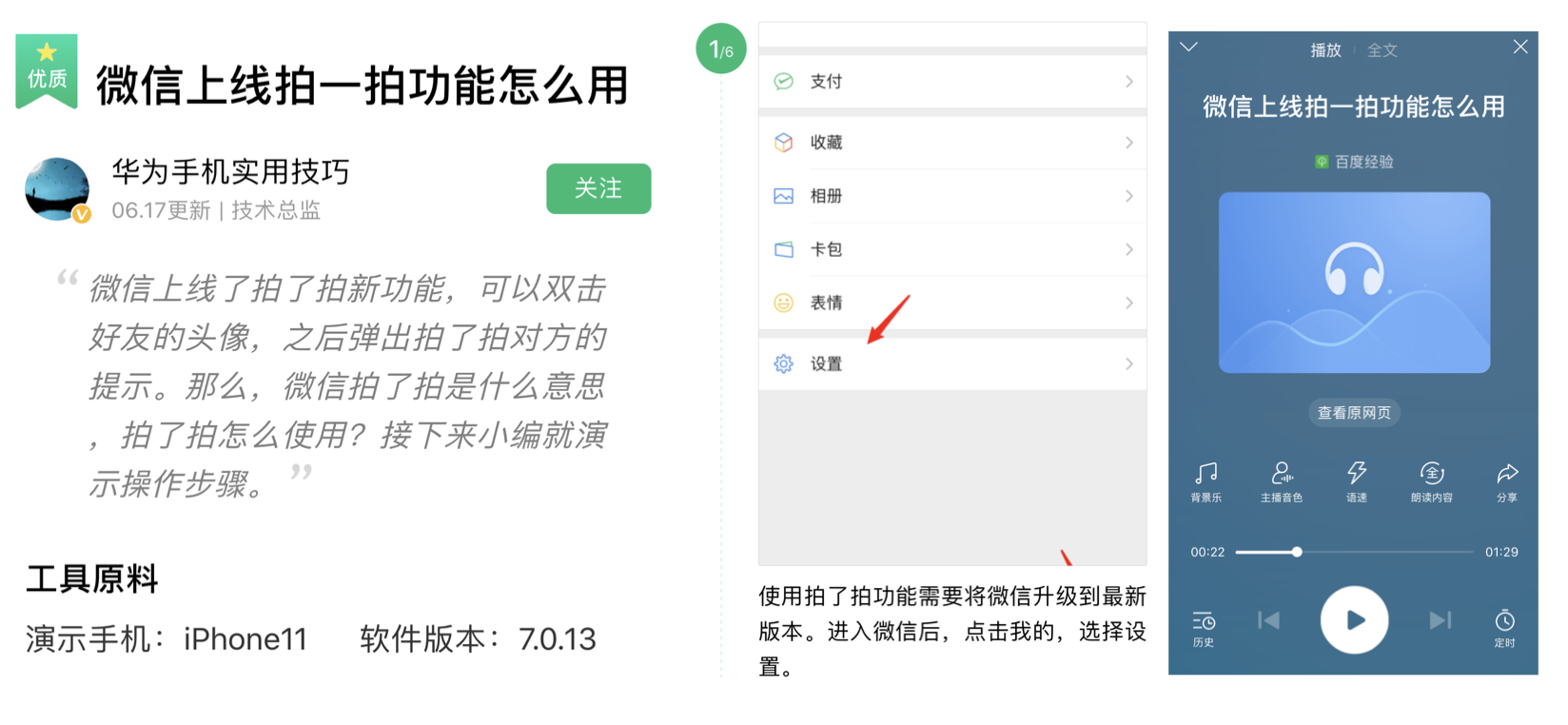
Based on the browser. It can only be accessed through searching in Baidu, which doesn’t have a go-to app.
Platform receive feedbacks from users and would modify itself often.
Most tutorials consist of multiple media forms: video, audio, images, and texts.
Have a complete Q&A system, interface is user-friendly.
Operations in Baidu Experience are not old people or non tech-savvy people friendly.
Built-in Onboarding Tutorials
Commonly-used apps like Wechat, Alipay and TikTok have built-in onboarding tutorials that would show up when a function in the app is first activated and guide new users through basic functions.
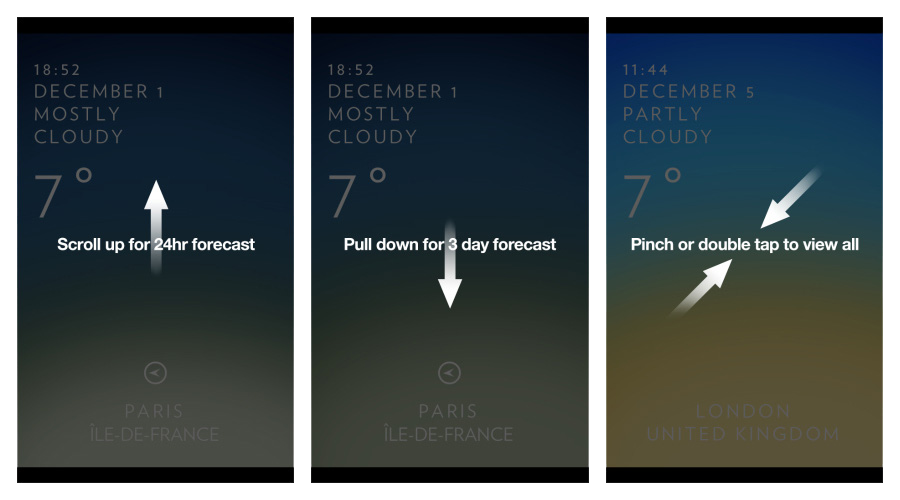
Tutorial is perfectly designed for the app. Users are able to operate on the app when learning.
Platform receives feedbacks from users and would modify itself often.
Going through this tutorial is usually mandatory before users start to use the function independently.
It’s usually a one-time tutorial. Disappears automatically once it is completed.
Asking others (relatives, friends)
The only method introduced here that is mainly based on communication.

The most affinity and approachable method of all.
Users can repeatedly ask their relative or friend for help.
Doesn't require extra knowledge in terms of technology.
The people they ask might not have the solution to their problems.
It would be bothering for the person they’ve been asking questions to.
User Journey
Based on my interviews and research, I created a user journey map of a user who encountered a problem while using WeChat moments.
I listed out their possible feelings, existing ways of interacting, and possible opportunities for my design to come in.
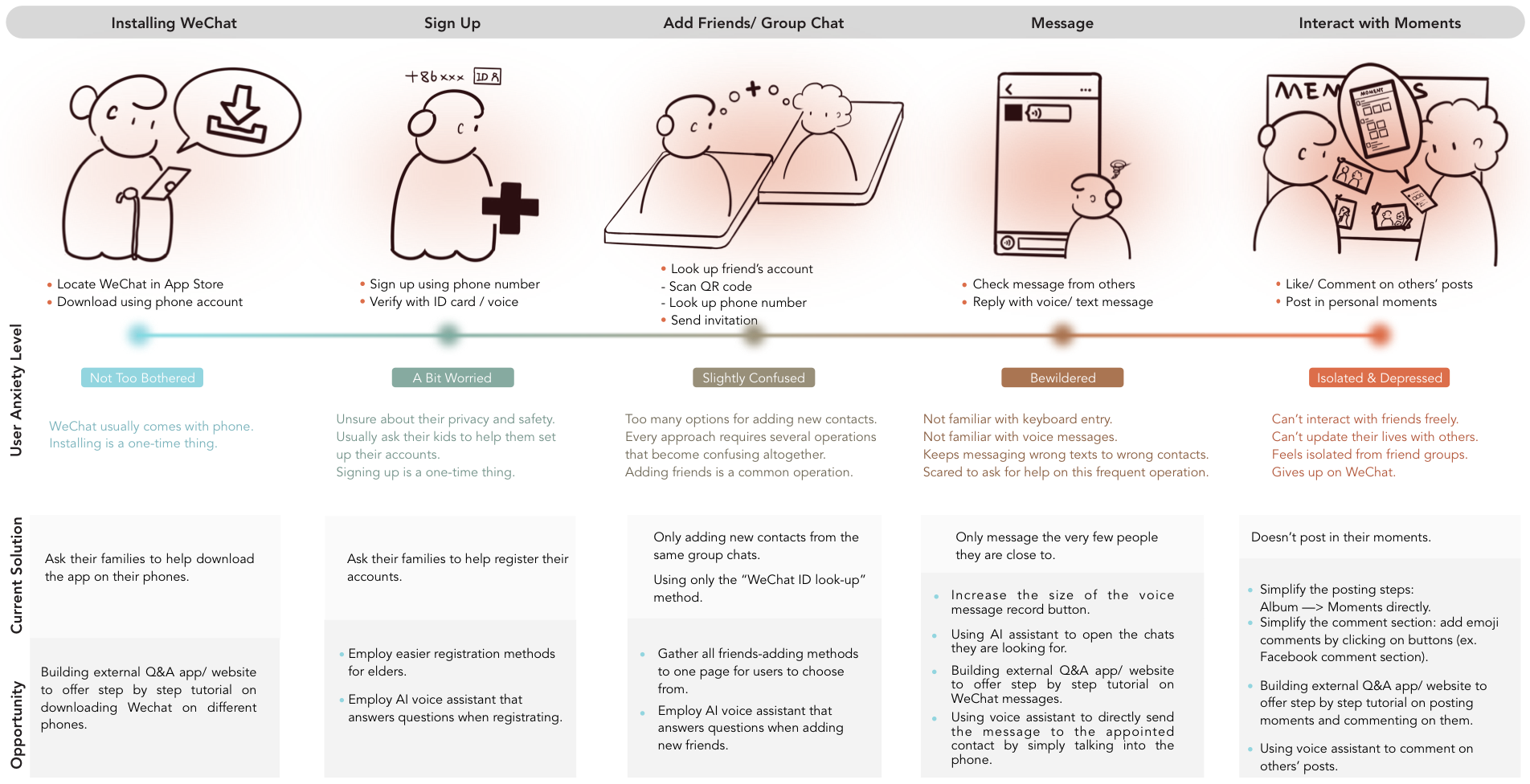
I ideated three possible solutions to ameliorate the current situation:
Solution A: An independent app ...
that integrates voice-recognization to assist people looking up the most relavant tutorials.
Platform: IOS, Android
Development difficulty: 6/10
Monetization: Ads display
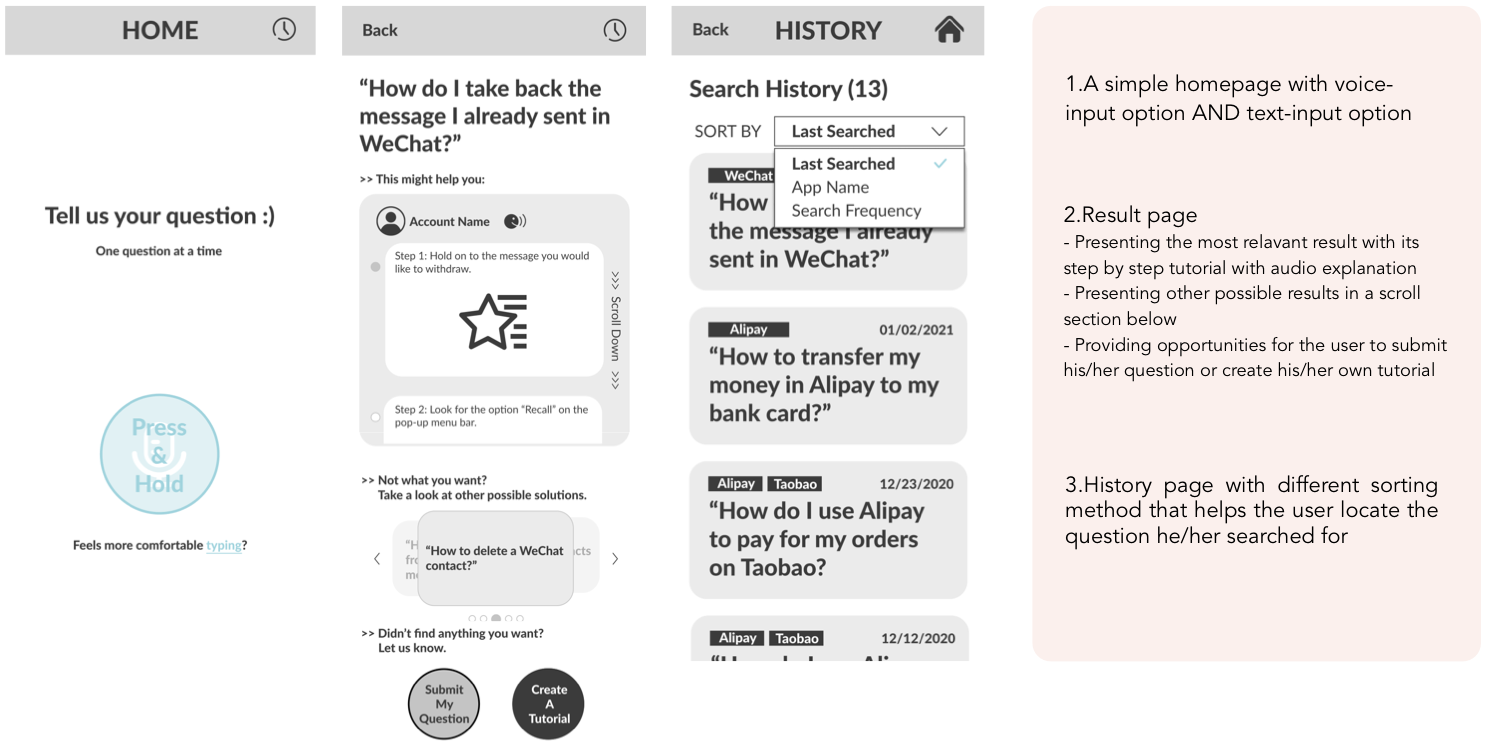
User-friendly interface with straightforward interactions and functions
Relatively easy to develop
No interference with the assisted apps (WeChat, Alipay…) themselves
Easily monetize by advertising for the apps mentioned
It is a new app for the user to get familiar with
Tutorials can be less accurate without strict supervision
Solution B: An app ...
that gets access to the apps it assists and works as a plug-in in the latter apps.
Platform: IOS, Android
Development difficulty: 9/10
Monetization: Cooperating with assisted apps
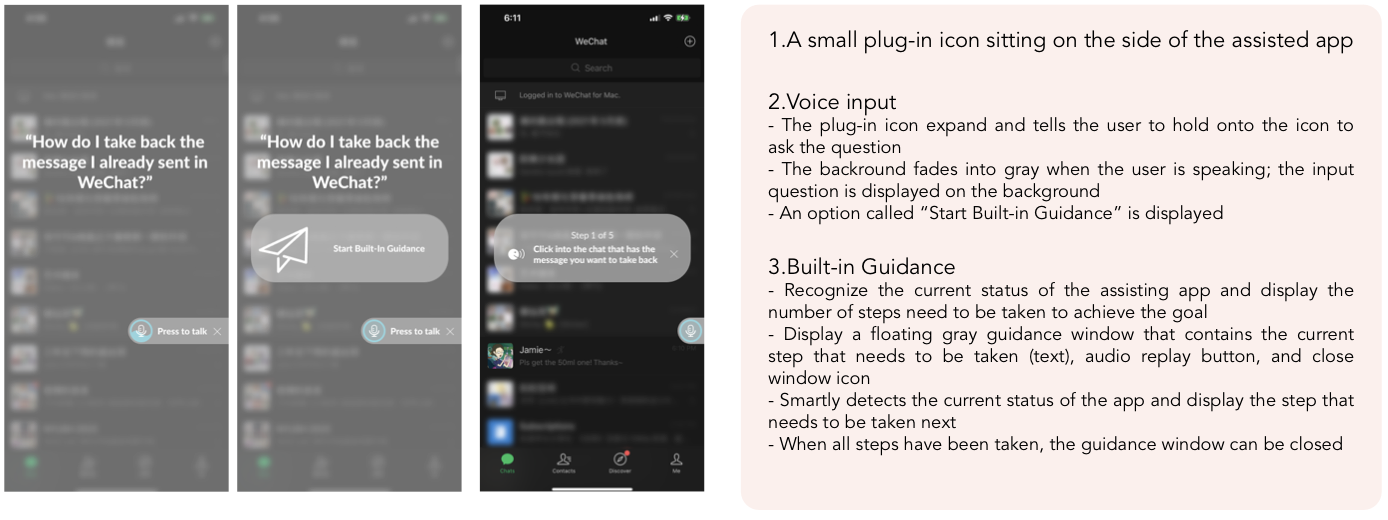
Can be customized for each app that needs assistances
The guidance is easy to follow and very straight-forward
Easily accessed from within the assisted app
Might interfere with the use of the assisted app
Requires more sophisticated customization according to each app it assists
Solution C: A simpler version ...
of the original app.
Platform: IOS, Android
Development difficulty: 9/10
Monetization: Cooperating with assisted apps
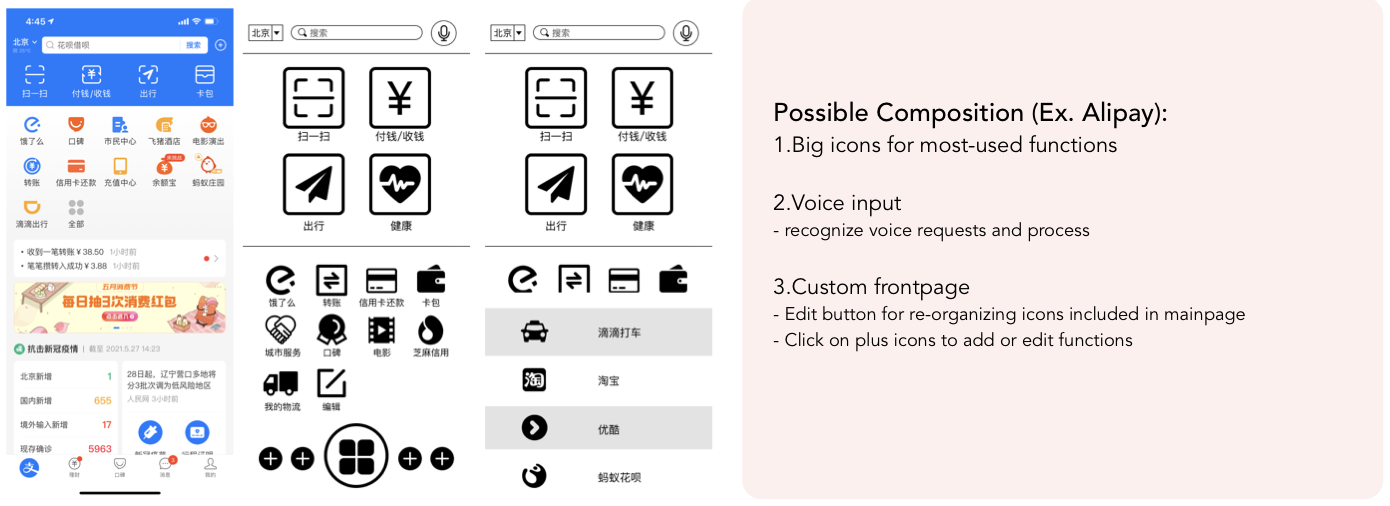
Focus on the most used function, easy to locate
Bigger icons and font size, easy to read
Harder for the elders to find a function that is not obvious in the simpler app version
Each app needs its own version, difficult to have one for every app
User Test
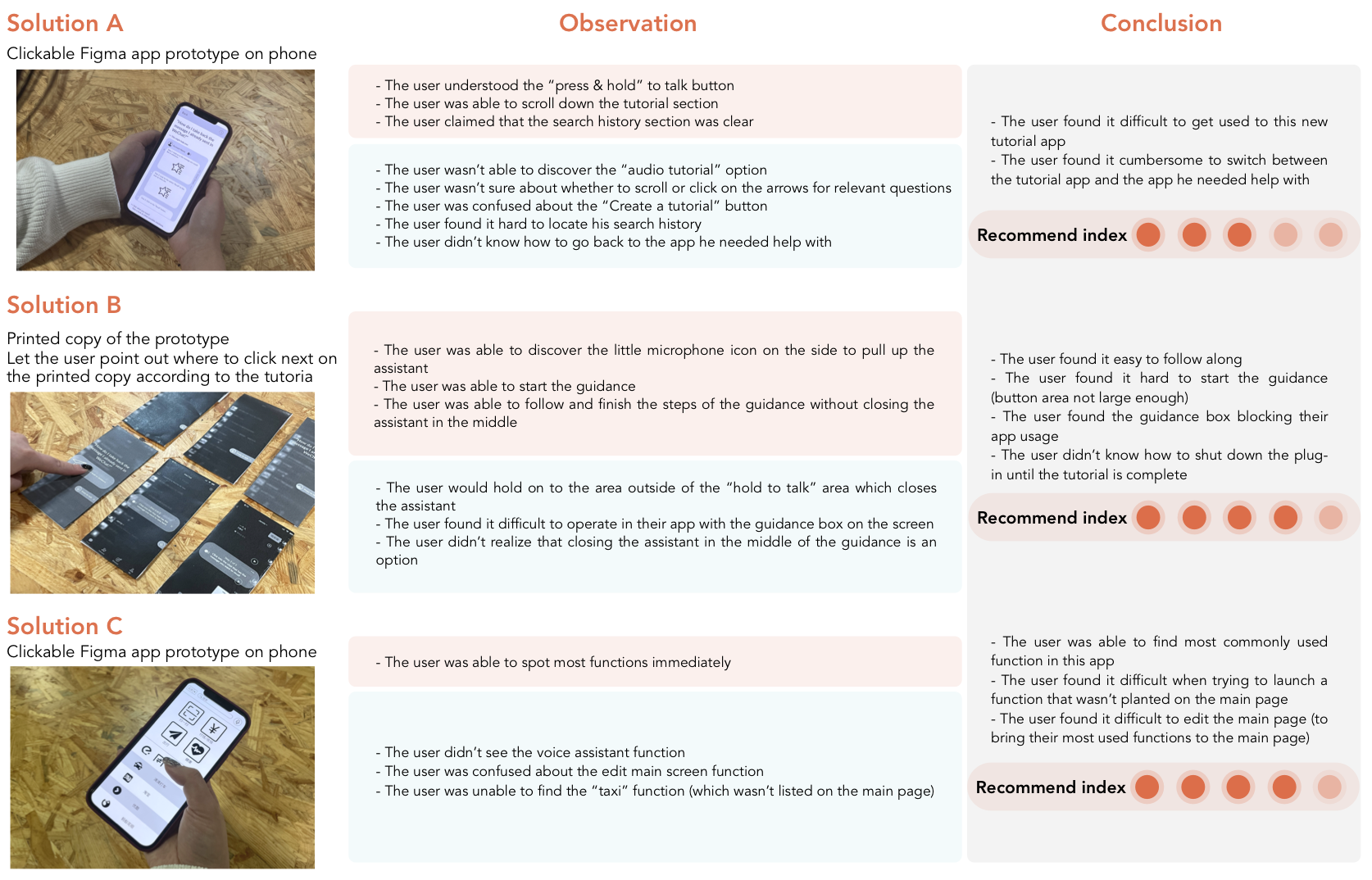
User Flow
